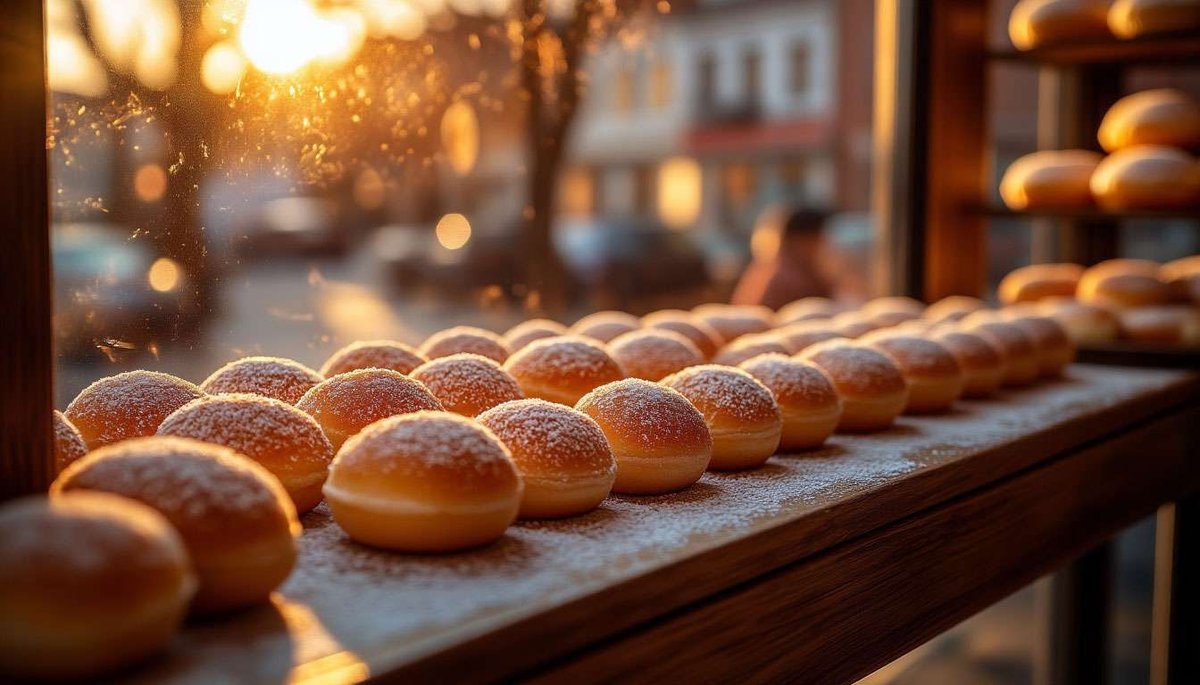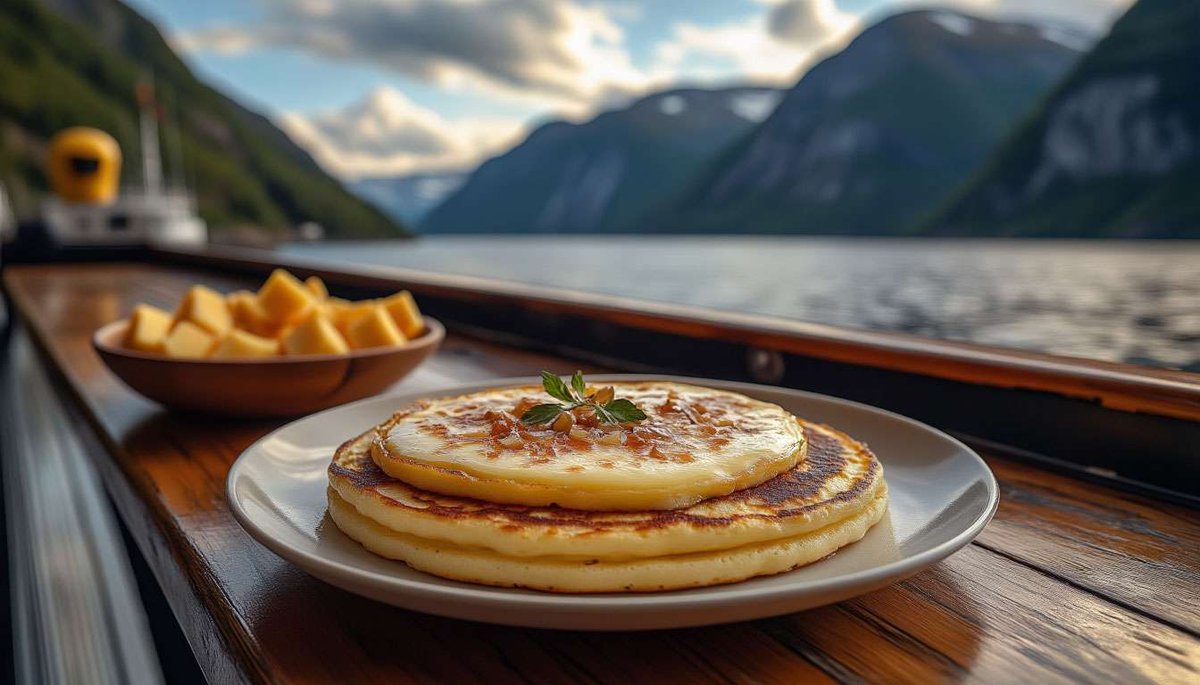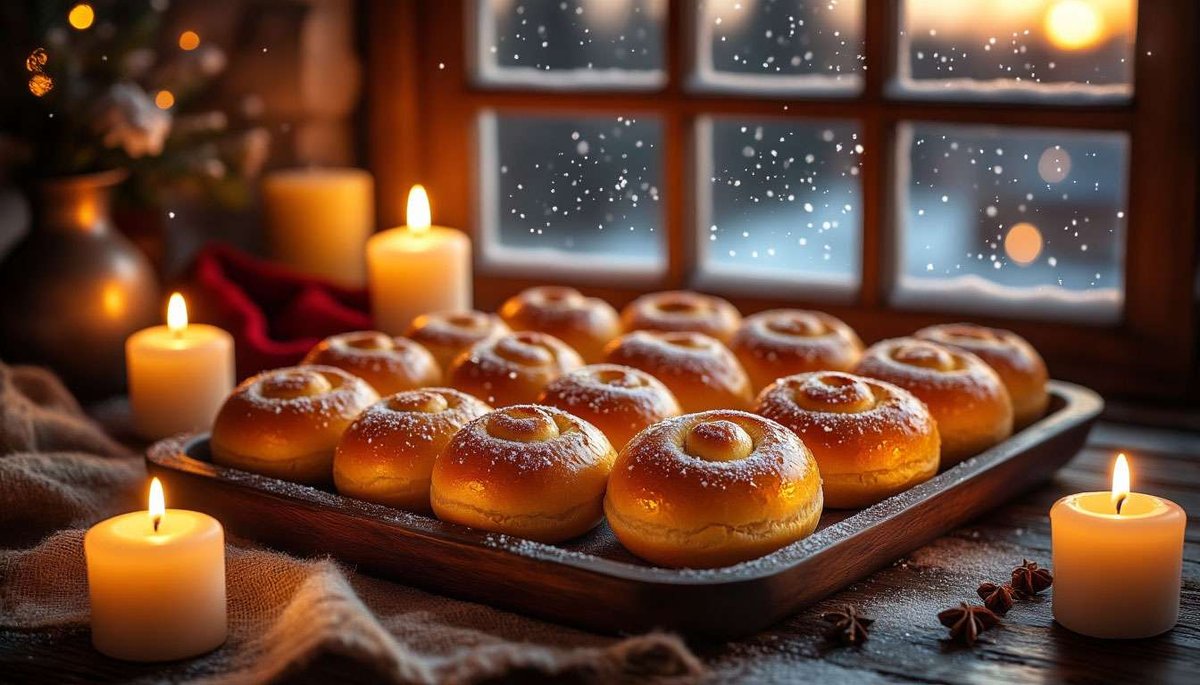The aroma of cinnamon and cardamom: Skillingsboller, Svele and Lussekatter – the sweet calling card of Norwegian baking

If the smell of baked cinnamon and cardamom gently hits your nose, then you're close — someone is baking Skillingsboller nearby. Add to that fluffy Svele pancakes with brown cheese and golden Lussekatter in December shop windows, and you have the three sweet treats that are essential to the Norwegian kaffepause coffee break. We explore how they came about, where to find them and how to bake them at home.
What are Skillingsboller and why are they considered to be from Bergen?
Skillingsboller are spiral yeast buns generously sprinkled with sugar and cinnamon. The first mentions date back to the 1870s: baker Johan Baker Brun sold them for one copper coin called a "skilling," hence the name. The buns quickly became "fuel" for the city's dockworkers: the sweet sugar and rich dough provided energy in the damp Bergen climate. Today, the best buns can be found at Baker Brun on Strandgaten and Godt Brød on Vetrlidsallmenningen — the aroma of cinnamon wafts through the whole of Bryggen.
How are Svele pancakes different from regular pancakes and why are they served on ferries?
Svele are thick but light pancakes made with baking soda and vinegar instead of yeast. They originate from the coast of Møre og Romsdal, where fishermen used to fry them on cast-iron takke right on the deck. In the 1970s, the state-owned ferry company Fjord1 made Svele its signature snack: passengers still buy pancakes with butter and Brunost today while enjoying the fjord panorama. The best Svele can be found on the Hareid–Sulesund and Molde–Vestnes ferries; in cities, try Café Fjord (Ålesund).

What are Lussekatter and why do Norwegians eat saffron buns in December?
Lussekatter are sweet S-shaped buns with saffron and raisins, baked on 13 December, St. Lucia's Day. The yellow colour symbolises light, contrasting with the polar night. Traditionally, children dressed in white and wearing candle wreaths carry Lussekatter to their neighbours, singing "Sankt Lucia". Try the best saffron buns at Åpent Bakeri (Oslo) and at the Bergen Christmas market, where they are sold hot, straight from the oven.

How to bake Skillingsboller and Svele at home and what to look out for?
Skillingsboller: dough moisture 70%, 2 rises of 45 minutes each, roll out, brush with 75 g soft butter + 100 g sugar + 15 g cinnamon, roll into a log, cut into 3 cm pieces, let rest for 30 minutes and bake for 12 minutes at 220°C. The secret is to sprinkle additional sugar shortly before the end of baking to achieve a crispy caramel.
Svele: 500 ml sour milk (kulturmelk), 2 eggs, 300 g flour, 1 tsp baking soda, 1 tsp baking powder, 50 g sugar. Knead, let stand for 15 minutes, fry without oil on a thick pancake takke or frying pan over medium heat. Serve immediately while the inside is still moist.
What drinks go best with these sweets?
- Skillingsboller + light roast filter coffee — the acidity of the coffee balances the sweetness of the cinnamon.
- Svele + black tea with birch leaves — the herbal bitterness emphasises the creaminess of the pancake.
- Lussekatter + hot glögg or milk cider — saffron brings out the floral notes in the drink.
Where in Norway does the "cinnamon bun marathon" take place, and is it worth a visit for foodies?
Every first Saturday in June, Bergen hosts Skillingsbolledagen, where bakeries compete for the "biggest bun". In 2024, the record was 2.3 metres in diameter! For tourists, there are tastings, master classes and discounts on cinnamon spices. Come early: by noon, the buns are gone, but the smell of cinnamon lingers over the Hanseatic waterfront until evening.
Norwegian sweet pastries are the aroma of cinnamon in rainy Bergen, warm buttery Svele accompanied by the cries of seagulls, and the golden light of Lussekatter dispelling the December darkness. Try all three masterpieces: while strolling through Bryggen, standing with a cup of coffee on the deck of a fjord ferry and admiring the Christmas lights. And when you return home, bake some Skillingsboller and let the cinnamon scent of the North Sea fill your kitchen.





2 comments
Log in to leave a comment